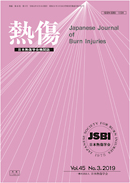Volume 48, Issue 3
Displaying 1-6 of 6 articles from this issue
- |<
- <
- 1
- >
- >|
Original
-
2022Volume 48Issue 3 Pages 76-89
Published: September 15, 2022
Released on J-STAGE: September 15, 2022
Download PDF (2216K)
Case Report
-
2022Volume 48Issue 3 Pages 90-94
Published: September 15, 2022
Released on J-STAGE: September 15, 2022
Download PDF (1694K) -
2022Volume 48Issue 3 Pages 95-101
Published: September 15, 2022
Released on J-STAGE: September 15, 2022
Download PDF (2235K) -
2022Volume 48Issue 3 Pages 102-107
Published: September 15, 2022
Released on J-STAGE: September 15, 2022
Download PDF (1516K) -
2022Volume 48Issue 3 Pages 108-113
Published: September 15, 2022
Released on J-STAGE: September 15, 2022
Download PDF (1720K)
Nursing Care
-
2022Volume 48Issue 3 Pages 114-121
Published: September 15, 2022
Released on J-STAGE: September 15, 2022
Download PDF (756K)
- |<
- <
- 1
- >
- >|
